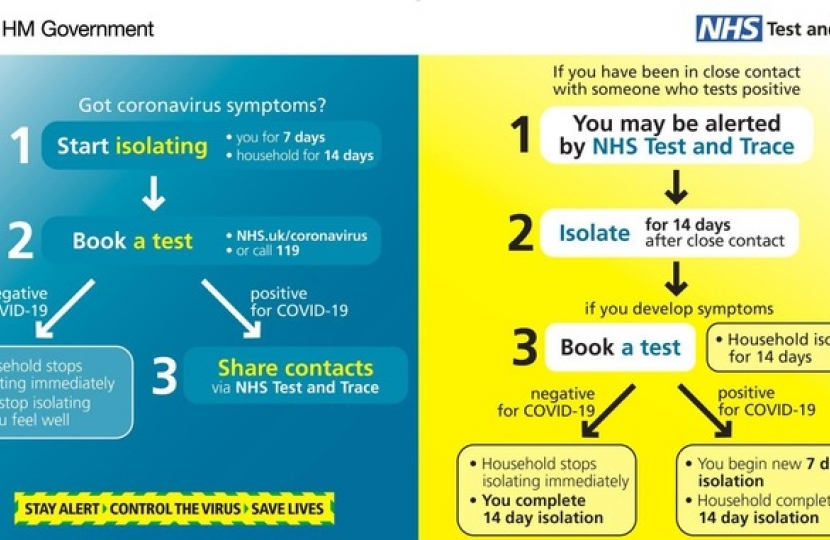
The new NHS Test and Trace service launched today (Thursday 28 May) across England to help identify, contain and control coronavirus, reduce the spread of the virus and save lives.
Anyone who tests positive for coronavirus will be contacted by NHS Test and Trace and will need to share information about their recent interactions. This could include household members, people with whom they have been in direct contact, or within 2 metres for more than 15 minutes.
People identified as having been in close contact with someone who has a positive test must stay at home for 14 days, even if they do not have symptoms, to stop unknowingly spreading the virus.
If those in isolation develop symptoms, they can book a test at nhs.uk/coronavirus or by calling 119. If they test positive, they must continue to stay at home for 7 days or until their symptoms have passed. If they test negative, they must complete the 14-day isolation period.
Members of their household will not have to stay at home unless the person identified becomes symptomatic, at which point they must also self-isolate for 14 days to avoid unknowingly spreading the virus.
Health and Social Care Secretary Matt Hancock said:
As we move to the next stage of our fight against coronavirus, we will be able to replace national lockdowns with individual isolation and, if necessary, local action where there are outbreaks.
NHS Test and Trace will be vital to stopping the spread of the virus. It is how we will be able to protect our friends and family from infection, and protect our NHS.
This new system will help us keep this virus under control while carefully and safely lifting the lockdown nationally.
NHS Test and Trace brings together 4 tools to control the virus:
- test: increasing availability and speed of testing will underpin NHS Test and Trace.
- trace: when someone tests positive for coronavirus the NHS Test and Trace service will use dedicated contact tracing staff, online services and local public health experts to identify any close recent contacts they’ve had and alert those most at risk of having the virus who need to self-isolate. This will be complemented by the rollout of the NHS COVID-19 App in the coming weeks.
- contain: a national Joint Biosecurity Centre will work with local authorities and public health teams in Public Health England (PHE), including local Directors of Public Health, to identify localised outbreaks and support effective local responses, including plans to quickly deploy testing facilities to particular locations. Local authorities have been supported by £300 million of new funding to help local authorities develop their own local outbreak control plans.
- enable: government to learn more about the virus, including as the science develops, to explore how we could go further in easing infection control measures.
The NHS Test and Trace service, including 25,000 dedicated contact tracing staff working with Public Health England, will have the capacity to trace the contacts of 10,000 people who test positive for coronavirus per day and can be scaled up if needed.
People who are contacted by the NHS Test and Trace service will be given clear information explaining what they must do and how they can access local support if needed. Guidance is also available online at gov.uk/coronavirus. This comes as the Department for Work and Pensions has announced that those having to self-isolate will be eligible for statutory sick pay if they are unable to work from home. This applies across the four nations of the UK.
https://www.gov.uk/guidance/nhs-test-and-trace-how-it-works

